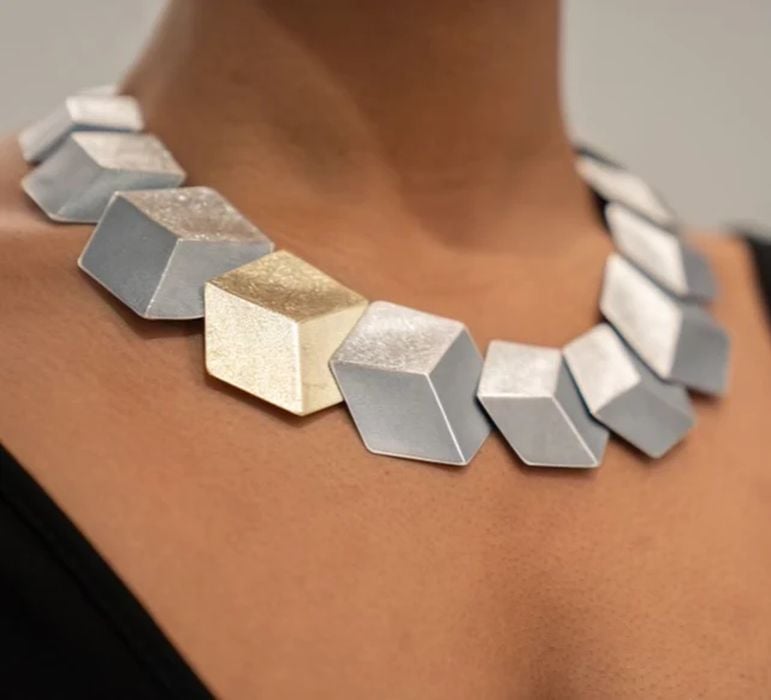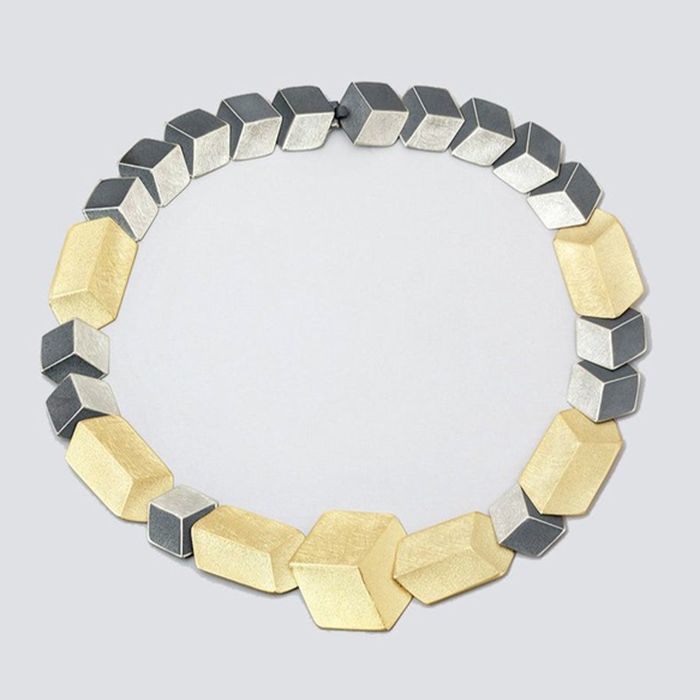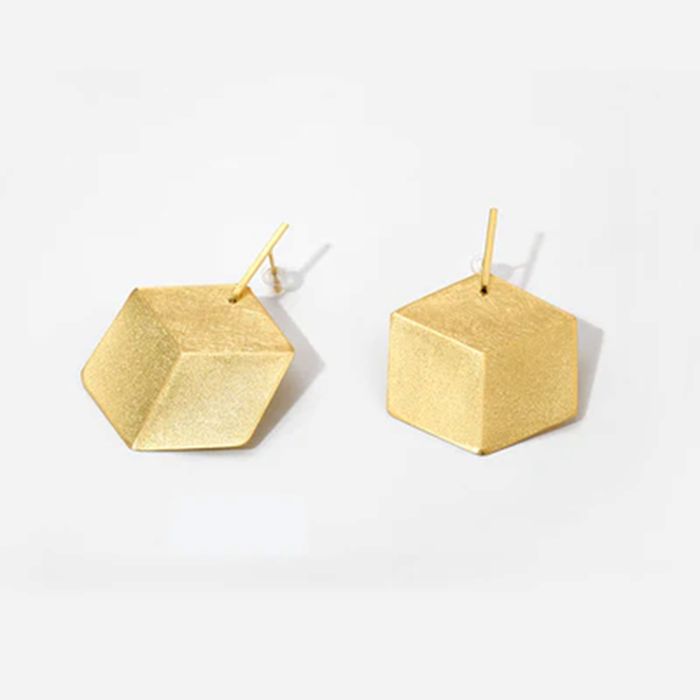
Charles R. Goulding discusses Robin Woolard’s 3D printed jewelry collection showcased at the Fairmont Hotel in San Francisco, California.
During our Labor Day excursion to San Francisco, my daughter Taylor was captivated by the showcase of Robin Woolard’s exquisite jewelry, elegantly presented at the renowned Fairmont Hotel. What caught her eye was the 3D printed pieces on display.
Robin Woolard is a San Francisco-based luxury designer and jeweler. For over three decades, he has drawn inspiration from the rich legacy of Italian goldsmithing during the Renaissance and crafting bespoke jewelry pieces and his work stands as a testament to the timeless traditions of the craft. While committed to the art of hand-forging metals without relying on wax and casting, Woolard’s latest innovative collection features 3D printed pieces. They are lightweight and embrace three-dimensional, textured geometric facets.

Hotel lobby window displays often present high-end products, and we like this association with 3D printed jewelry. Robin Woolard’s website has a selection of designer earrings, brooches and necklaces that are all 3D printed.
We have previously written about how 3D printing is changing the jewelry industry around the globe and how it can be used to nail the latest trends.

The Research & Development Tax Credit
The now permanent Research and Development (R&D) Tax Credit is available for companies developing new or improved products, processes and/or software.
3D printing can help boost a company’s R&D Tax Credits. Wages for technical employees creating, testing and revising 3D printed prototypes can be included as a percentage of eligible time spent for the R&D Tax Credit. Similarly, when used as a method of improving a process, time spent integrating 3D printing hardware and software counts as an eligible activity. Lastly, when used for modeling and preproduction, the costs of filaments consumed during the development process may also be recovered.
Whether it is used for creating and testing prototypes or for final production, 3D printing is a great indicator that R&D Credit eligible activities are taking place. Companies implementing this technology at any point should consider taking advantage of R&D Tax Credits.
Conclusion
At a time when San Francisco is experiencing some retail sales challenges it is good to see 3D printed designer products showcased as such. Hopefully, other retailers will also consider emphasizing that their products are 3D printed.
